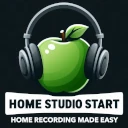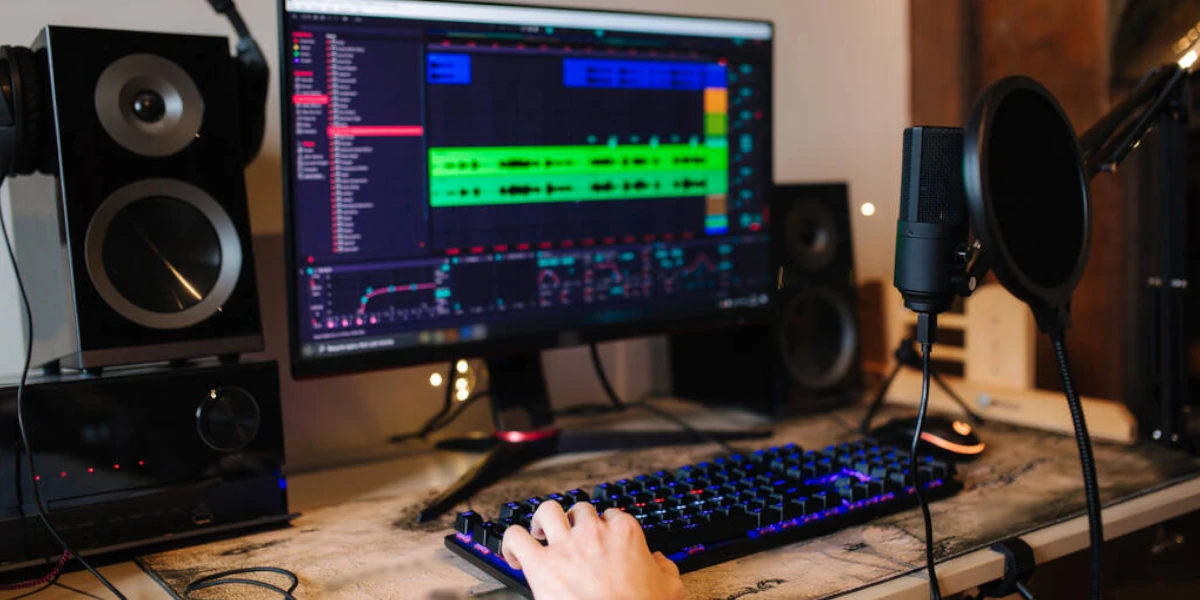Have you ever dreamed of having your own home studio where you can record and produce your music with professional quality? Do you think that setting up a home studio is too expensive, complicated, or time-consuming? If you answered yes to any of these questions, then this blog post is for you.
In this blog post, I will show you the five indispensable technologies that you need in any home studio. These technologies are not only affordable and easy to use, but also powerful and versatile. They will allow you to achieve high quality recording and save hundreds of thousands of dollars that you would otherwise spend on expensive physical equipment.
By using these five technologies, you will be able to create your own musical masterpiece, whether you are a beginner or an expert, a singer or an instrumentalist, a solo artist or a band member. You will also be able to express your creativity, showcase your talent, and share your music with the world.
So, are you ready to discover the five indispensable technologies in any home studio? Let’s get started!
#01 – Audio Editor
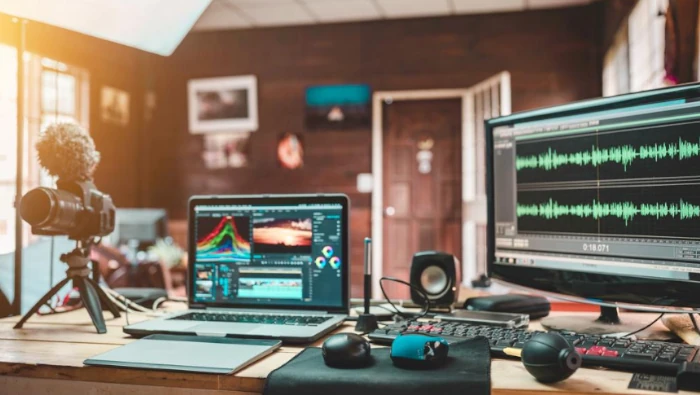
The first technology that you need in your home studio is an audio editor. An audio editor is a software that allows you to record, edit, and manipulate audio files. You can use an audio editor to perform various tasks, such as:
- Audio mastering: This is the process of enhancing the sound quality of your audio files by applying effects, such as equalization, compression, reverb, and limiting. Audio mastering can make your audio files sound more professional, balanced, and consistent.
- Noise reduction: This is the process of removing unwanted noises from your audio files, such as hiss, hum, clicks, pops, and background sounds. Noise reduction can make your audio files sound more clear, clean, and crisp.
- Editing tools: These are the tools that allow you to cut, copy, paste, trim, fade, and mix audio files. You can use editing tools to adjust the length, volume, and position of your audio files, as well as to create transitions, loops, and effects.
Some examples of popular audio editors are Audacity, WavePad, and Adobe Audition. These audio editors are easy to use, have a user-friendly interface, and support various audio formats. They also have a wide range of features and functions that can help you with your audio production.
#02 – Multichannel Recorder
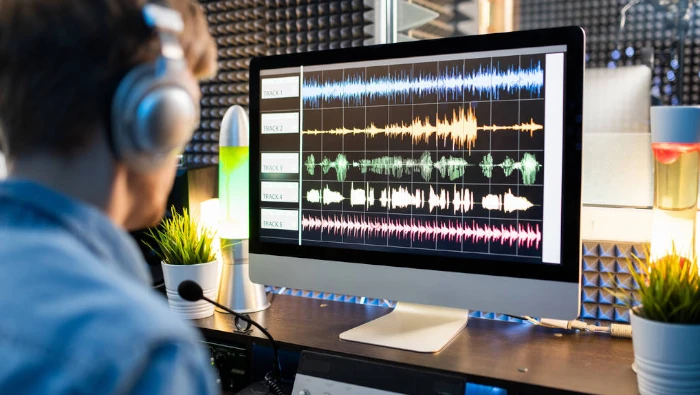
The second technology that you need in your home studio is a multichannel recorder. A multichannel recorder is a software that allows you to record and manipulate multiple audio tracks simultaneously. You can use a multichannel recorder to perform various tasks, such as:
- Recording: This is the process of capturing the sound of your voice or instrument and storing it as an audio file. You can record multiple audio tracks at the same time, using different inputs, such as microphones, instruments, or MIDI devices. You can also record over existing audio tracks, creating layers of sound.
- Manipulating: This is the process of modifying the sound of your audio tracks, using various tools, such as cut, copy, paste, trim, fade, and mix. You can manipulate multiple audio tracks at the same time, changing their length, volume, position, and pan. You can also manipulate the pitch, tempo, and time of your audio tracks, creating effects such as pitch shifting, time stretching, and beat slicing.
- Applying effects: This is the process of enhancing the sound of your audio tracks, using various effects, such as equalization, compression, reverb, delay, chorus, flanger, and distortion. You can apply effects to individual audio tracks, or to groups of audio tracks, using buses and sends. You can also apply effects to the master track, affecting the overall sound of your mix.
- Mixing: This is the process of blending the sound of your audio tracks, creating a balanced and harmonious mix. You can mix multiple audio tracks at the same time, using a virtual mixing console, which has faders, knobs, meters, and buttons. You can also use automation, which allows you to change the parameters of your audio tracks over time, creating dynamic changes in your mix.
Some examples of popular multichannel recorders are Cakewalk by BandLab, Reaper, and Pro Tools. These multichannel recorders are powerful and versatile, have a customizable interface, and support various audio formats and plugins. They also have a wide range of features and functions that can help you with your audio production.
#03 – MIDI Sequencer
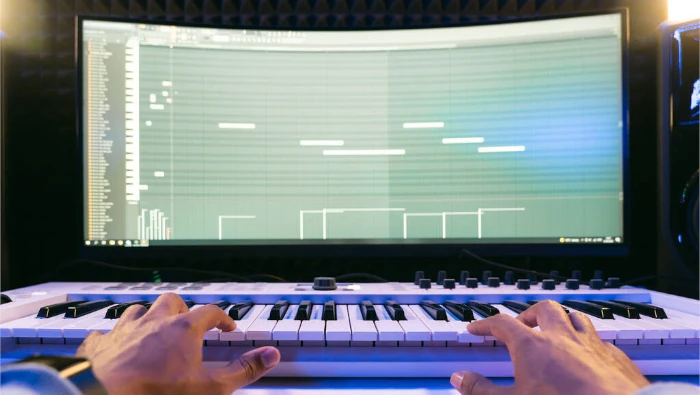
The third technology that you need in your home studio is a MIDI sequencer. A MIDI sequencer is a software that allows you to create and edit musical notes, using the MIDI protocol. MIDI stands for Musical Instrument Digital Interface, and it is a standard that enables communication between musical devices, such as keyboards, synthesizers, drum machines, and computers. You can use a MIDI sequencer to perform various tasks, such as:
- Creating musical notes: This is the process of generating musical notes, using either a MIDI keyboard, a mouse, or a computer keyboard. You can create musical notes in different ways, such as recording, drawing, or typing. You can also create musical notes in different modes, such as step, real-time, or piano roll.
- Editing musical notes: This is the process of modifying musical notes, using various tools, such as cut, copy, paste, trim, transpose, and quantize. You can edit musical notes in different ways, such as selecting, dragging, or nudging. You can also edit musical notes in different modes, such as grid, snap, or groove.
- Sequencing musical notes: This is the process of organizing musical notes, creating a sequence of events, or a musical arrangement. You can sequence musical notes in different ways, such as arranging, looping, or triggering. You can also sequence musical notes in different modes, such as track, pattern, or song.
Some examples of popular MIDI sequencers are Cakewalk by BandLab, FL Studio, and Cubase. These MIDI sequencers are flexible and creative, have a graphical interface, and support various MIDI formats and devices. They also have a wide range of features and functions that can help you with your musical production.
#04 – Virtual Sampler
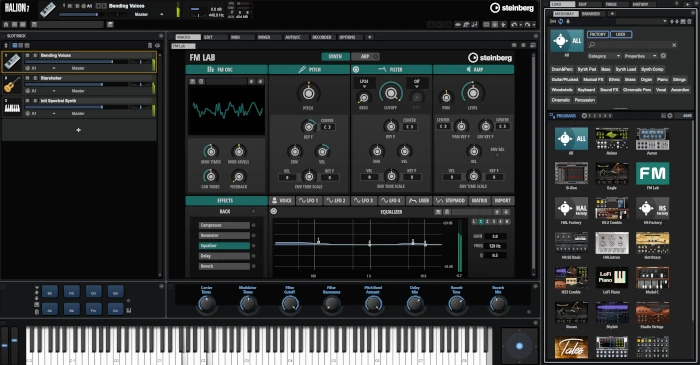
The fourth technology that you need in your home studio is a virtual sampler. A virtual sampler is a software that allows you to play and record audio samples, using either a MIDI keyboard, a mouse, or a computer keyboard. Audio samples are recordings of real or synthetic sounds, such as instruments, vocals, drums, or effects. You can use a virtual sampler to perform various tasks, such as:
- Playing audio samples: This is the process of triggering audio samples, using either a MIDI keyboard, a mouse, or a computer keyboard. You can play audio samples in different ways, such as mapping, layering, or splitting. You can also play audio samples in different modes, such as polyphonic, monophonic, or legato.
- Recording audio samples: This is the process of capturing the sound of your voice or instrument and storing it as an audio sample. You can record audio samples in different ways, such as sampling, resampling, or slicing. You can also record audio samples in different formats, such as WAV, AIFF, or SF2.
- Creating realistic sounds: This is the process of enhancing the sound of your audio samples, using various tools, such as filters, envelopes, LFOs, and modulators. You can create realistic sounds in different ways, such as adjusting the pitch, volume, and pan of your audio samples, as well as adding effects, such as reverb, delay, chorus, flanger, and distortion. You can also create realistic sounds in different modes, such as velocity, key, or round-robin.
Some examples of popular virtual samplers are Kontakt, HALion, and SampleTank. These virtual samplers are realistic and expressive, have a large and diverse library of audio samples, and support various audio formats and plugins. They also have a wide range of features and functions that can help you with your musical production.
#05 – Miscellaneous Audio Plugins
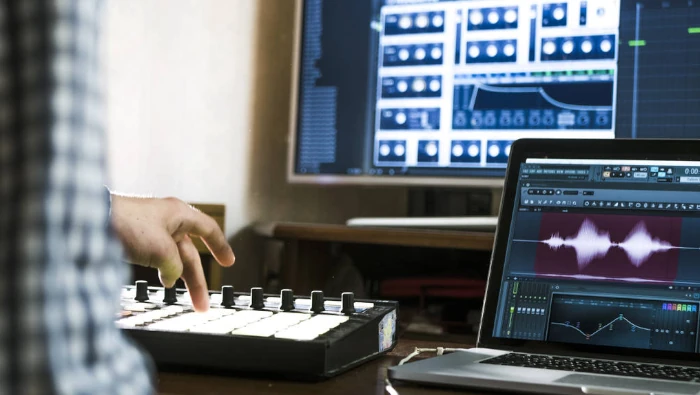
The fifth and final technology that you need in your home studio is a miscellaneous audio plugin. A miscellaneous audio plugin is a software that adds extra features and functions to your audio production software, such as your audio editor, multichannel recorder, or virtual sampler. You can use a miscellaneous audio plugin to perform various tasks, such as:
- Enhancing the sound quality: This is the process of improving the sound quality of your audio files, using various tools, such as equalizers, compressors, limiters, and maximizers. You can enhance the sound quality in different ways, such as adjusting the frequency, dynamic, and loudness of your audio files, as well as adding warmth, clarity, and punch to your sound.
- Adding special effects: This is the process of adding special effects to your audio files, using various tools, such as reverbs, delays, choruses, flangers, and distortions. You can add special effects in different ways, such as creating space, depth, and movement in your audio files, as well as adding color, character, and texture to your sound.
- Correcting vocal tuning: This is the process of correcting the pitch of your vocal tracks, using various tools, such as pitch correction, pitch shifting, and pitch modulation. You can correct vocal tuning in different ways, such as fixing the intonation, vibrato, and drift of your vocal tracks, as well as creating harmonies, melodies, and effects with your voice.
Some examples of popular miscellaneous audio plugins are Melodyne, Auto-Tune, and iZotope RX7. These miscellaneous audio plugins are accurate and efficient, have a intuitive interface, and support various audio formats and plugins. They also have a wide range of features and functions that can help you with your audio production.
Conclusion
In this blog post, I have shown you the five indispensable technologies that you need in any home studio. These technologies are:
- Audio editor: A software that allows you to record, edit, and manipulate audio files.
- Multichannel recorder: A software that allows you to record and manipulate multiple audio tracks simultaneously.
- MIDI sequencer: A software that allows you to create and edit musical notes, using the MIDI protocol.
- Virtual sampler: A software that allows you to play and record audio samples, using either a MIDI keyboard, a mouse, or a computer keyboard.
- Miscellaneous audio plugin: A software that adds extra features and functions to your audio production software, such as your audio editor, multichannel recorder, or virtual sampler.
By using these five technologies, you can achieve high quality recording and save hundreds of thousands of dollars that you would otherwise spend on expensive physical equipment. You can also create your own musical masterpiece, express your creativity, showcase your talent, and share your music with the world.
I hope this blog post has helped you to understand the basics of setting up a home studio and the benefits of using the five indispensable technologies. If you have any questions or feedback, please feel free to leave a comment below. Thank you for reading and happy recording!
